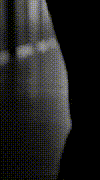Two.
Make it two.
If you're breaking the bank for one, you can afford two.
Two enclosures come in handy when you need to swap datas between your hds, and your main hd is nearly dying: with two external hds you can move files without actually having them reside on a damaged unit, so you're not straining your older hd, but you can squeeze a bit more out of it.
Also, you could devote one of those external units as an alternate boot drive: newer bios revisions allow for flashcard and usb drive boot - you could bypass a damaged internal unit altogether.
Finally, keeping system files on a different partition from you personal datas might help too: hds don't wear out all of a sudden. If you're lucky they'll first develop bad clusters on the most used partition first. Namely, windows's.
If your personal files were on a different partition, you could simply backup you documents and settings folder, reformat the c: partition, and bring it back to life from a backup.
With a backup boot hd [or a backup windows install on a d: partition] you could do this without ever disassembling the main unit.




